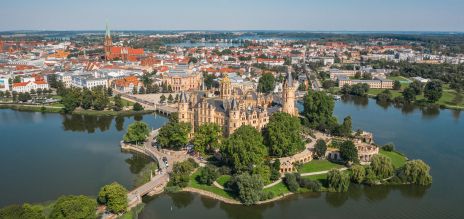Since reunification in 1990, the Federal Republic of Germany has had 16 rather than just eleven Länder or federal states, the five new states being Brandenburg, Mecklenburg-Vorpommern, Saxony, Saxony-Anhalt and Thuringia. Districts in the former East Germany (GDR) were merged to recreate the former historic states. There were no Länder in the GDR.
Titles such as “Free State” in the case of Bavaria, Saxony and Thuringia, “Hanseatic City” for Hamburg and “Free Hanseatic City” in the case of Bremen, are historical designations and have no legal meaning in today’s federal state. When the former GDR was reunited with West Germany, the territory of the Federal Republic of Germany increased by 43 percent from 249,000 square kilometres to 357,000 square kilometres, and the population at the time grew by 26 percent from around 62 million to 78.2 million.

Today, Germany has around 83.8 million inhabitants. Baden-Württemberg “We can do anything.
Except speak standard German,“ they say in Baden-Württemberg. This official site humorously presents the “Ländle“ where four dialects are spoken. Population: 11.
28 million State capital: Stuttgart Surface area: 35,751 km2 Gross domestic product in € million (2023): 615,071 (3rd place) Gross domestic product per capita (2023): 54,339 (5th place) Unique feature: besides many world-famous companies, Baden-Württemberg is home to 390 hidden champions. Seats in the : 6 Ranked first place for: Spending on research �.
















